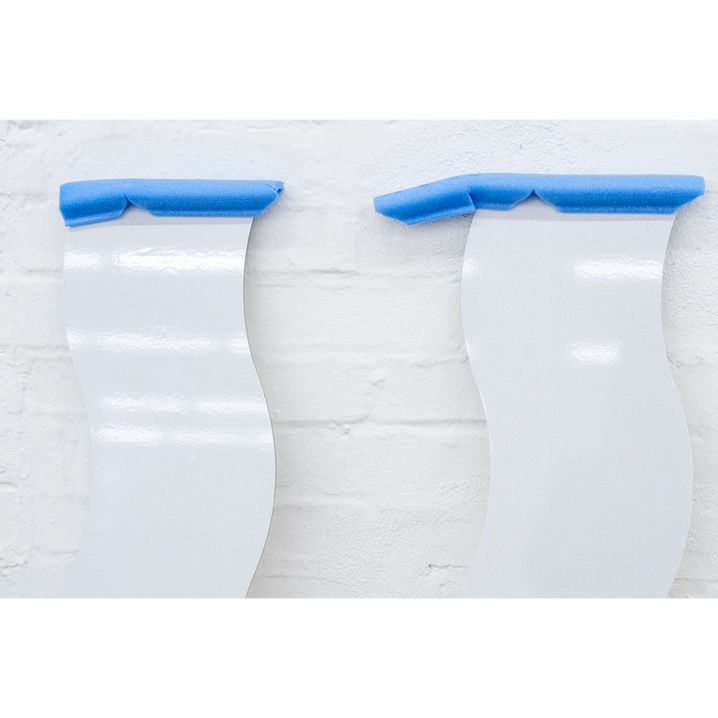paradise is exactly like where you are right now only much much better
2023

while traditional sports such as running or shot put rely on a clear starting point and a directed release of energy, surfing is about inserting oneself into an already existing dynamic — into a wave, a current, a direction that is not self-generated. What matters is not the initial impulse, but the act of slipping in, fiting in, of inserting oneself.
In this sense, surfing becomes an ambivalent signifier: on the one hand, a symbol for coordinating with the uncontrollable, for a form of bodily knowledge situated in relation to one’s surroundings; on the other, an expression of a neoliberal paradigm in which subjects must remain flexible, alert, and responsive in order to stay connected. The surf students on the backs of the mirrors embody this in-between space: they practice, observe, wait for favorable conditions. Their embodied knowledge is situational, permeable, fluid — and simultaneously marked by a culture in which adaptability has become a requirement. In societies where power no longer operates through
fixed institutions but through modular forms of governance, subjects are no longer enclosed but are kept in perpetual motion.
The work addresses this simultaneity of fascination and threat that comes with fluidity. Water appears not only as an element, but as a figure of thought — representing drift, uncertainty, transformation. At the same time, fluidity points to an emancipatory potential by breaking apart rigid orders and enabling alternative patterns of relation. The mirrors do not act as neutral surfaces but as active agents in the field of body, image, and environment. They produce no reassurance, but rather a noise, a gliding, a continuous re-positioning.
Visitors become part of a spatial feedback system with no center, only circulation. The wave mirrors fragment bodies, distort sightlines, shift image planes — a precarious field that changes with every movement.
The risographs depict a sequence of hands between which a translucent, floating object flickers, oscillating between objecthood and abstraction. Once again, the focus is on what withdraws, what can only be seen in motion — or is it perhaps the invisible hand of a magical capitalism operating here?
Instead of utopia, a space of disorientation and dislocation emerges — open, relational, archipelagic.In reference to Édouard Glissant’s concept of „archipelagic thinking,“ the installation operates through loose, shifting constellations. Elements temporarily link, then dissolve again. Perception becomes a probing, performative act: situational, fragile, fleeting — a field of images in motion




























